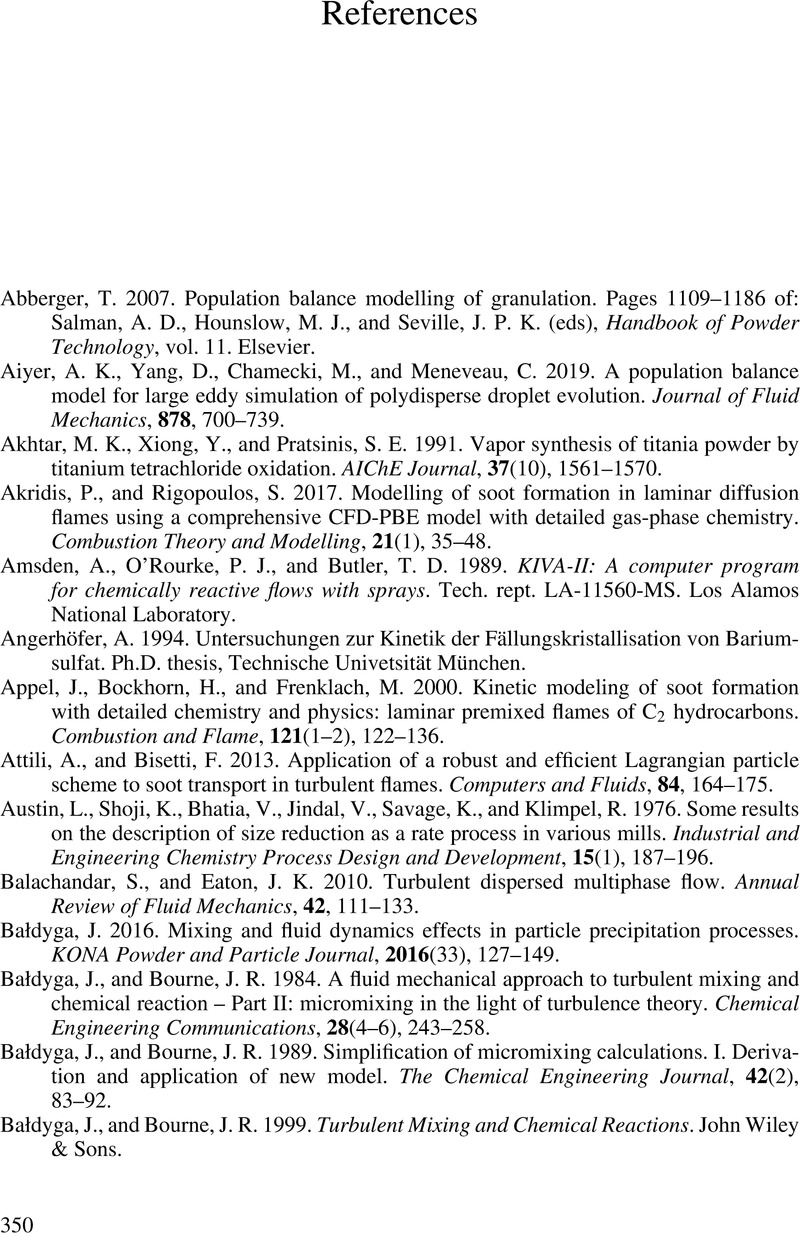Book contents
- Frontmatter
- Dedication
- Contents
- Preface
- Acknowledgements
- Notation
- 1 Introductory Concepts
- 2 Formulation of the Population Balance
- 3 Kinetic and Transport Processes
- 4 Solution of the PBE
- 5 Population Balance in Turbulent Flow
- 6 Case Studies of CFD-PBE Application
- Appendix A Coupling of PBE with Fluid Flow, Heat and Mass Transfer
- Appendix B Implementation of the Conservative Finite Volume Discretisation Method
- Appendix C Derivation of the PDF Transport Equation
- Appendix D Derivation of the Stochastic Field Equation
- References
- Index
- References
References
Published online by Cambridge University Press: 14 November 2024
- Frontmatter
- Dedication
- Contents
- Preface
- Acknowledgements
- Notation
- 1 Introductory Concepts
- 2 Formulation of the Population Balance
- 3 Kinetic and Transport Processes
- 4 Solution of the PBE
- 5 Population Balance in Turbulent Flow
- 6 Case Studies of CFD-PBE Application
- Appendix A Coupling of PBE with Fluid Flow, Heat and Mass Transfer
- Appendix B Implementation of the Conservative Finite Volume Discretisation Method
- Appendix C Derivation of the PDF Transport Equation
- Appendix D Derivation of the Stochastic Field Equation
- References
- Index
- References
Summary

- Type
- Chapter
- Information
- Population Balance of Particles in FlowsFrom Aerosols to Crystallisation, pp. 350 - 378Publisher: Cambridge University PressPrint publication year: 2024

